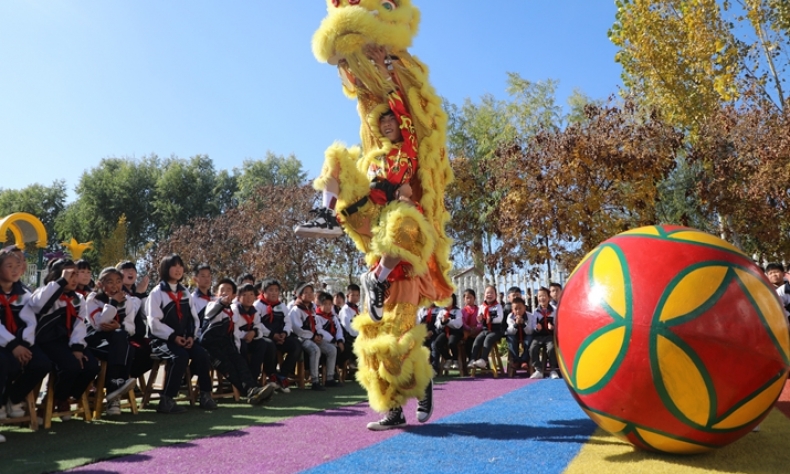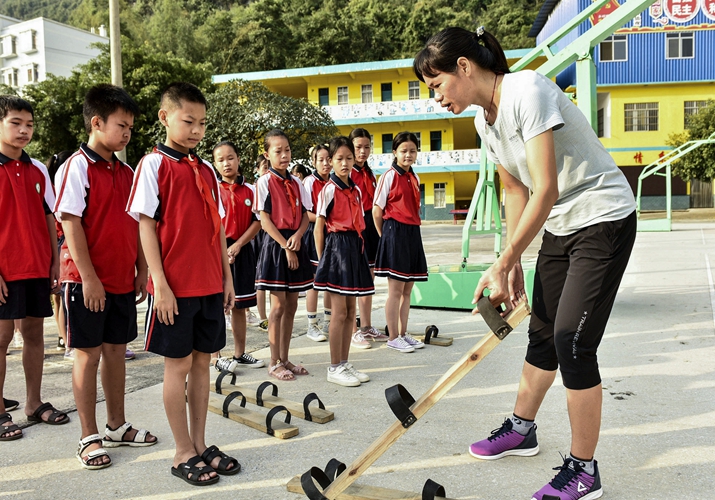
Academic Evaluation Should Be Reformed to Produce Well-Rounded Students
Schools must become more capable of ensuring that the process-based and comprehensive evaluation of students is objective and fair. This is crucial for the education evaluation system reform.
To establish an up-to-date and world-class evaluation system by 2035, an overall plan on educational evaluation reform was issued on October 13, which proposes a four-pronged evaluation approach to be followed in a coordinated manner. In addition, the plan calls for making good use of information technology to make evaluations more effective and objective.
The four-pronged approach refers to improving outcome evaluation, strengthening process evaluation, exploring value-added evaluation and enhancing comprehensive evaluation.
This approach addresses a long-standing problem plaguing the evaluation system, colloquially referred to as the “five-only” malady.
The malady is an overemphasis on test scores, admission into higher-level education institutions, diplomas, number of published papers and similar credentials when evaluating students, teachers and schools.
The purpose of basic education is to nurture young people with an all-round moral, intellectual, physical and artistic grounding as well as work ethics and skills. The “five-only” malady has led to deviations from the purpose. At the National Education Conference in Beijing in September 2018, President Xi Jinping called for reform of the evaluation system to remedy this.
Looking beyond scores
Judging students only by scores in some subjects may lead to them and their parents caring about performance in these subjects alone while neglecting other aspects. For instance, currently, whether a student can enter university depends on the performance in one single exam—the national college entrance examination, or gaokao. Since moral standards, physical fitness, art literacy and work ethics and skills are not covered in the exam, education in these aspects has not received as much attention as subjects such as mathematics and languages.
Under the current system, some students have pursued high academic scores at the expense of their health. National Health Commission data in 2019 showed a high overall incidence of myopia among children and adolescents: 14.5 percent among 6-year-olds, 36 percent among primary school students, 71.6 percent among junior high school students and 81 percent among senior high school students.
Parents also tend to evaluate teaching by looking at test scores and admission rates into higher-level schools. Many schools have not paid sufficient attention to physical education (PE). Measures have been taken to urge various parties to pay more attention to improving students’ physical fitness. Since 1993, physical fitness has been tested for entrance into senior high schools in some places; and since 2007, as required by the Ministry of Education (MOE), it has been included in senior high school entrance examinations in most places.
However, in 2016, the General Office of the State Council noted that some schools still didn’t have enough PE classes while students didn’t have enough extracurricular physical activities, and the lack of PE teachers and facilities remained a salient problem. It issued a notice on strengthening PE to promote the physical and mental health of students.
Some people think physical fitness should be given more weight in high school admission, and should be tested in the gaokao.
Guidelines have been issued recently on strengthening physical and art education. One document proposes improving the content and scoring method of sports items in the senior high school entrance examination, and gradually increasing the maximum possible score. The other document says it is necessary to explore how to bring art subjects into the pilot reform of senior high school entrance examination and promote objective and fair evaluation with modern technology.

At an MOE press conference last month, Wang Dengfeng, director of the Physical Education, Health and Art Department of the MOE, said the maximum possible physical fitness score should be increased year by year during senior high school entrance exams, to reach the same level as those of language and mathematics courses. He pointed out that Yunnan Province in southwest China has already increased it to 100, the same as language and mathematics full scores.
Nonetheless, there is a worry that further increasing the maximum possible physical fitness score might give rise to examination-oriented PE. If that were true, the measure would make students’ life more stressful rather than truly arouse their interest in sport activities and inspire them to learn more sports skills.
In terms of art literacy tests, there is also a concern that since some students are naturally more gifted in art than others, the test scores might not adequately reflect students’ efforts.
To address these concerns, it is necessary to improve outcome evaluation and strengthen process evaluation. Whether a student should be admitted into higher-level schools should not depend on the performance in one entrance exam; the overall performance during the education process should be taken into consideration.
The overall reform plan proposes that the practice of labeling students with scores should be halted, and innovation should be made in process evaluation methods to assess students’ all-round development.
Process evaluation is used in developed countries such as the U.S. Although U.S. universities look at applicants’ scores in the Scholastic Assessment Test and American College Test, yet they also look at their grade point average in high schools and other special skills.
In recent years, more and more foreign universities have begun to recognize the results of the gaokao. However, they do not admit students solely based on gaokao scores.
The plan also proposes performance value-added evaluation—assessing how much progress the students have made from enrollment till graduation. Greater progress indicates a more effective education.
The promotion of process evaluation can start from the evaluation of physical fitness. Students’ performance in PE classes and participation in physical exercises and sports competitions should be combined to form an overall physical fitness score, which will prompt schools and students to attach importance to PE.
At the same time, local education departments should ensure schools have adequate PE resources and urge them to offer enough PE classes and organize students to carry out physical exercises.
The plan has made it clear efforts will be made to accelerate the creation and use of documents that record the overall competence of junior and senior high school students, and gradually change the practice of selecting students simply based on examination results.
Ensuring fairness
However, a problem facing process, value-added and comprehensive evaluation methods is how to ensure their objectivity, fairness and credibility. Result evaluation is the easiest to administer and the fairest, but cannot reflect the comprehensive competence of students. Process and comprehensive evaluation methods might not be objective, and so, the joint efforts of various parties are necessary to ensure their credibility.
Schools must become more capable of ensuring that the process-based and comprehensive evaluation of students is objective and fair. This is crucial for the education evaluation system reform.
The plan proposes building a professional evaluation system engaging the government, schools and other social sectors, establishing an evaluation monitoring mechanism overseen by the education authorities, and giving play to the roles of professional and social organizations.
The author is director of the Shenzhen-based 21st Century Education Research Institute
 Facebook
Facebook
 Twitter
Twitter
 Linkedin
Linkedin
 Google +
Google +










